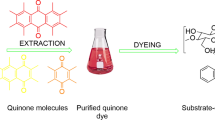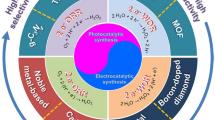Abstract
Chlorogenic acid and its two structural components, quinic acid and caffeic acid, were pyrolyzed under reaction conditions simulating the typical pyrolysis conditions inside a burning cigarette. Major phenolic products from pyrolysis of the three acids were quantified and compared to evaluate the respective contribution of the quinic and caffeic acid moieties to the overall phenolic yield in chlorogenic acid pyrolysis. The results show that the most prominent phenolic product of chlorogenic acid is catechol, followed in order by phenol, hydroquinone, and alkylcatechols. Among these phenolics, catechol and alkylcatechols are formed mainly from the caffeic acid moiety of chlorogenic acid, while phenol and hydroquinone are produced predominantly from the quinic acid moiety. The quinic acid moiety can thus contribute more than 40 % of the overall phenolic yields in chlorogenic acid pyrolysis (0.54 mol mol−1 chlorogenic acid pyrolyzed at 600 °C). Because considerable amounts of free quinic acid and its derivatives exist in tobacco, the results of this study indicate that quinic acid can be an important source of phenolic compounds, especially hydroquinone and phenol, in tobacco smoke.





Similar content being viewed by others
References
Johnstone RAW, Plimmer JR. The chemical constituents of tobacco and tobacco smoke. Chem Rev. 1959;59(5):885–936.
Stedman RL. Chemical composition of tobacco and tobacco smoke. Chem Rev. 1968;68(2):153–207.
McGrath TE, Brown AP, Meruva NK, Chan WG. Phenolic compound formation from the low temperature pyrolysis of tobacco. J Anal Appl Pyrolysis. 2009;84(2):170–8.
Czégény Z, Blazsó M, Várhegyi G, Jakab E, Liu C, Nappi L. Formation of selected toxicants from tobacco under different pyrolysis conditions. J Anal Appl Pyrolysis. 2009;85(1–2):47–53.
Schlotzhauer WS, Snook ME, Chortyk OT, Wilson RL. Pyrolytic evaluation of low chlorogenic acid tobaccos in the formation of the tobacco smoke co-carcinogen catechol. J Anal Appl Pyrolysis. 1992;22(3):231–8.
Van Duursen MBM, Sanderson JT, De Jong PC, Kraaij M, Van den Berg M. Phytochemicals inhibit catechol-O-methyltransferase activity in cytosolic fractions from healthy human mammary tissues: implications for catechol estrogen-induced DNA damage. Toxicol Sci. 2004;81(2):316–24.
Kaur N, Lacasse M, Fürtös A, Waldron KC, Morin A. Sequential fractionation with concurrent chemical and toxicological characterization of the combustion products of chlorogenic acid. J Chromatogr A. 2009;1216(23):4703–12.
Schlotzhauer WS, Martin RM, Snook ME, Williamson RE. Pyrolytic studies on the contribution of tobacco leaf constituents to the formation of smoke catechols. J Agr Food Chem. 1982;30(2):372–4.
Carmella SG, Hecht SS, Tso TC, Hoffmann D. Roles of tobacco cellulose, sugars, and chlorogenic acid as precursors to catechol in cigarette smoke. J Agr Food Chem. 1984;32(2):267–73.
Torikaiu K, Uwano Y, Nakamori T, Tarora W, Takahashi H. Study on tobacco components involved in the pyrolytic generation of selected smoke constituents. Food Chem Toxicol. 2005;43(4):559–68.
Baker RR, Bishop LJ. The pyrolysis of non-volatile tobacco ingredients using a system that simulates cigarette combustion conditions. J Anal Appl Pyrolysis. 2005;74(1–2):145–70.
Maskos Z, Khachatryan L, Dellinger B. Precursors of radicals in tobacco smoke and the role of particulate matter in forming and stabilizing radicals. Energy Fuels. 2005;19(6):2466–73.
Zhou S, Wang CH, Xu YB, Hu Y. The pyrolysis of cigarette paper under the conditions that simulate cigarette smouldering and puffing. J Therm Anal Calorim. 2011;104(3):1097–106.
Nakanishi M, Ogi T, Fukuda Y. Thermogravimetric analysis with gas chromatograph mass spectrometry of Japanese fir wood (Abies sachalinensis) in helium with or without steam-oxygen. J Therm Anal Calorim. 2013;111(1):929–37.
Li XY, Su L, Wang YJ, Yu YQ, Wang CW, Li XL, et al. Catalytic fast pyrolysis of kraft lignin with HZSM-5 zeolite for producing aromatic hydrocarbons. Front Environ Sci Eng. 2012;6(3):295–303.
Yu YQ, Li XY, Su L, Zhang Y, Wang YJ, Zhang HZ. The role of shape selectivity in catalytic fast pyrolysis of lignin with zeolite catalysts. Appl Catal A Gen. 2012;447:115–23.
Sharma RK, Fisher TS, Hajaligol MR. Effect of reaction conditions on pyrolysis of chlorogenic acid. J Anal Appl Pyrolysis. 2002;62(2):281–96.
Halliwell BB, Poulsen HE. Cigarette smoke and oxidative stress. 1st ed. New York: Springer; 2006.
Nowakowski DJ, Jones JM. Uncatalysed and potassium-catalysed pyrolysis of the cell-wall constituents of biomass and their model compounds. J Anal Appl Pyrolysis. 2008;83(1):12–25.
Xie J. The constituents of tobacco and tobacco smoke. 1st ed. Beijing: Chemical Industry; 2010.
Wang YJ, Cannon FS, Salama M, Fonseca DA, Giese S. Characterization of pyrolysis products from a biodiesel phenolic urethane binder. Environ Sci Technol. 2009;43(5):1559–64.
Sharma RK, Hajaligol MR, Smith PAM, Wooten JB, Baliga V. Characterization of char from pyrolysis of chlorogenic acid. Energy Fuels. 2000;14(5):1083–93.
Ahamad T, Alshehri SM. Thermal degradation and evolved gas analysis of epoxy (DGEBA)/novolac resin blends (ENB) during pyrolysis and combustion. J Therm Anal Calorim. 2013;111(1):445–51.
Meszaros E, Jakab E, Varhegyi G, Szepesvary P, Marosvolgyi B. Comparative study of the thermal behavior of wood and bark of young shoots obtained from an energy plantation. J Anal Appl Pyrolysis. 2004;72(2):317–28.
Wang YJ, Zhang Y, Su L, Li XY, Duan L, Wang CW, et al. Hazardous air pollutant formation from pyrolysis of typical Chinese casting materials. Environ Sci Technol. 2011;45(15):6539–44.
Quan C, Li AM, Gao NB. Research on pyrolysis of PCB waste with TG-FTIR and Py-GC/MS. J Therm Anal Calorim. 2012;110(3):1463–70.
Farah A, De Paulis T, Trugo LC, Martin PR. Effect of roasting on the formation of chlorogenic acid lactones in coffee. J Agr Food Chem. 2005;53(5):1505–13.
Scholz BM, Maier HG. Isomers of quinic acid and quinide in roasted coffee. Z Lebensm Unters Forsch. 1990;190(2):132–4.
Lomnicki S, Truong H, Dellinger B. Mechanisms of product formation from the pyrolytic thermal degradation of catechol. Chemosphere. 2008;73(4):629–33.
Jiang DS, Peterson DG. Role of hydroxycinnamic acids in food flavor: a brief overview. Phytochem Rev. 2010;9(1):187–93.
Palmer JK. Occurrence of l-quinic acid in tobacco leaves. Science. 1957;126(3272):504–5.
Nagasawa M. A microcolorimetric method for the determination of quinic acid and its content in flue-cured tobacco. B Agr Chem Soc Japan. 1958;22(4):205–7.
Acknowledgments
This research is supported by the Funding of Shanghai Tobacco (Group) Corporation (2011-1-010), a grant from the NSFC project (51008175), and the National Special Program of Water Pollution Control and Management (No. 2012ZX07301-005).
Author information
Authors and Affiliations
Corresponding author
Rights and permissions
About this article
Cite this article
Wang, Z., Li, X., Zhen, S. et al. The important role of quinic acid in the formation of phenolic compounds from pyrolysis of chlorogenic acid. J Therm Anal Calorim 114, 1231–1238 (2013). https://doi.org/10.1007/s10973-013-3142-z
Received:
Accepted:
Published:
Issue Date:
DOI: https://doi.org/10.1007/s10973-013-3142-z




